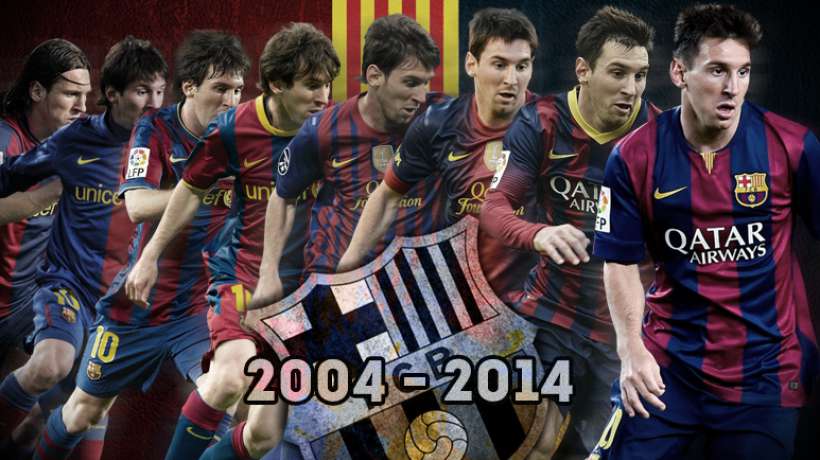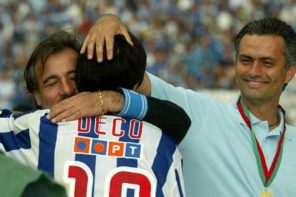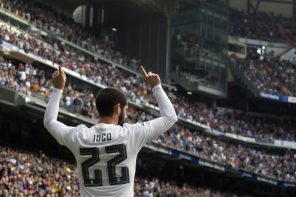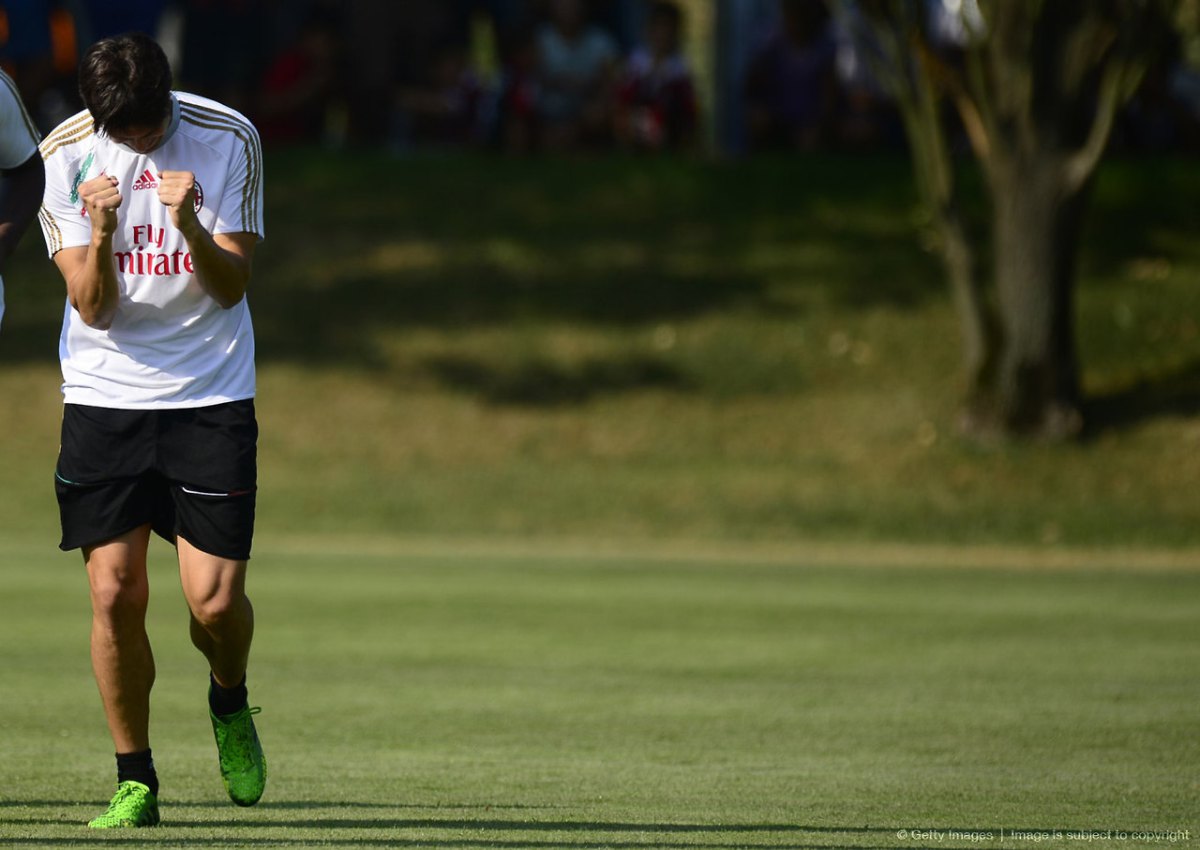Ten years on from making his first team debut, there’s still no classification for Lionel Messi.
“Sc” (sin clasificación): Unclassified. That was the match rating awarded to Lionel Messi in El Mundo Deportivo (a Catalan sports newspaper) after making his competitive first-team debut for Barcelona on 16 October 2004 against Espanyol.
10 years on, the rating seems quite fitting – prophetic almost; although the context it was written in back then was quite different to what is now meant. In 2004 the “sc” was awarded because Messi had only been on the pitch for little more than 10 minutes (having replaced Deco in the 82 minute) and therefore not long enough for the paper to give a fair rating. Now, 10 years later, Messi still has no classification – both in terms of superlatives (they’ve all been used up), and his ever-changing adaptation of the Number 10 role.
Still only 27, the Argentine has redefined football standards by sheer consistency of brilliance. As Sid Lowe has commented on numerous occasions, Messi’s genius has become so common, so run of the mill, that breaking records have become simply par for him. So how do you classify someone who produces the indescribable – time and again? Guardiola once told the world: “Don’t write about him, don’t try to describe him. Watch him.” He has a point.
By age 24 he had already become Barcelona’s all-time leading goalscorer. This week, he could become La Liga’s all-time leading goalscorer (he currently trails Telmo Zarra’s record of 251 goals by just two).
This phenomenal (superlative) goal haul is even more incredible (another superlative) considering Messi’s position as a player. Profiled as a No.10 from a young age he’s gone on to outscore most (if not all) strikers around Europe’s top flight leagues. However, having played a variety of role adaptations since his first-team debut it’s difficult to now know how to define him.
Since 2004 Messi has primarily played in only two formations at club level: Barca’s 4-3-3 and 3-4-3. Within this, his positioning has changed from the modern-day wing-forward/inverted winger – a position that so many modern-day playmakers have had to evolve into, or been accommodated in – to moving inside centrally; re-igniting the ‘false 9’ role and bringing it to the wider conscious of football fans around the world (yes, more so than Francesco Totti), before becoming something more approaching an orthodox forward.
When he first arrived at Barcelona’s youth set-up as a 14-year old, it was blindingly obvious that Messi already had the profile of a typical No.10 according to his very first coach at the club, Rodolfo Borrell, who spoke with me exclusively in 2013 – although the term enganche, which had been used to describe the young Leo in Argentinian news reports, was not one the Spanish coach was familiar with at the time.
I had the good luck to be the first coach of Lionel Messi,” Borrell told me. “And the first thing I had [about him] was a piece of newspaper – photocopied – from Argentina when the player was coming on trial. I was the coach at this moment in 2000/01 and the newspaper was talking about his position: ‘enganche’. For me it was the first time I had heard it – enganche is meaningful in Argentina, nothing to do with Spain,” Borrell said, before continuing:
In Spain, you would say ‘mediapunta’ or ‘the diez’ – the No.10. Player No.10 is this offensive midfielder, usually with great skills, great vision, good final pass, good finisher, very creative. [He] can make the difference.
Borrell confirmed even at that age it was easy to tell that Messi’s role would be that of a ‘10’, but also added a fascinating insight into how formation shifts in the team can affect the role, giving a better understanding as to why we have seen Messi undertake so many positional tweaks, despite always being a No.10.
Yes, it was very easy [to see that he was a No.10 at that age]. When he came into Barcelona’s youth system we were playing a 3-4-3 diamond formation in the middle…like this [Borrell then demonstrated on his tactics board which was hung up on his office wall] so this player [the No.10] had a lot more freedom with three players [in midfield] behind him and didn’t have to work defensively.
When this became 4-3-3, with four [in midfield] you can cope with one not working but with three it’s a lot more difficult because if one is not working you are left outnumbered. This is why when the 3-4-3 became 4-3-3, the No.10 [usually] ends up playing on the wing, cutting inside.
These players – most of them – end up playing on the wing with the freedom to cut inside, and now [speaking in April 2013] Barca are trying to look for a variation of that, which is why Messi is inside, Dani Alves is the fullback/winger and the rest slide across.
Back to today and despite clearly always having the profile of a classic No.10, since his 2004 debut he’s rarely been used as such. Could this be the final d/evolution of Messi’s role?
Many have predicted this will be the case with some believing the summer arrival of Luis Suarez, allied with the presence of Neymar, will herald this possibility much sooner than anticipated. Particularly with the Argentine succumbing to numerous muscular injuries over the last 18 months which has no doubt affected his explosiveness. Messi could be deployed deeper, behind the two aforementioned forwards and become less of a goalscorer but more of a goal creator.
As he becomes older could we finally see a Lionel Messi as a No.10 in the purest form? Relying even more on vision, decisive passing and technique from the classic position on the field – or as Borrell stated ‘the offensive midfielder with great skills who makes the difference.’
Until then – and probably even then – 10 years on from making his professional debut, Lionel Messi is still unclassifiable.









great article.. should write more (y)
im huge fans of fantasista-trequartista type of player and this is my top 10 fantasista (since 1997, my first year in football)
1. Messi
2. Zidane
3. Del Piero
4. Ronaldinho
5. Kaka
6. Totti
7. Bergkamp
8. Rui Costa
9. Neymar
10. James Rodriguez